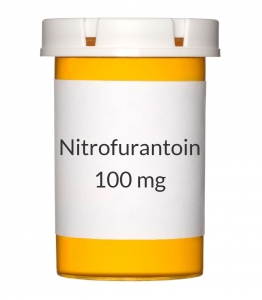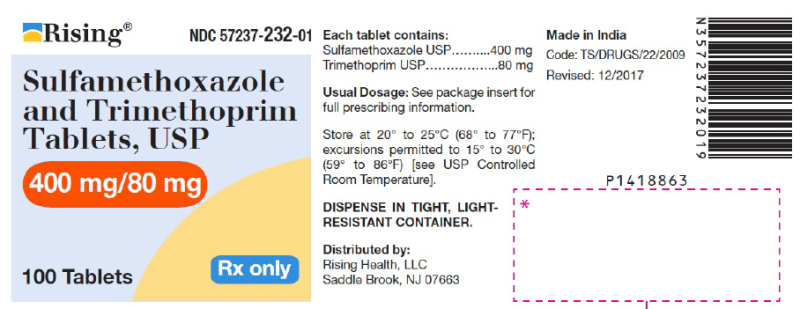Bactrim vs. Macrobid for UTIs 7 Similarities and Differences You Should Know About
Written by Miss Bria Mayer | Reviewed by Uche Ruth
Updated on June 11, 2024
Key Takeaways:
- Bactrim (sulfamethoxazole / trimethoprim) and Macrobid (nitrofurantoin monohydrate / macrocrystals) are first-choice antibiotics for treating UTIs. They’re available with a prescription from your healthcare provider.
- Bactrim and Macrobid have several notable differences. Macrobid generally has fewer side effects and interactions, but Bactrim can treat more than just UTIs.
- Bactrim and Macrobid are both available as lower-cost generics. GoodRx can help you save over 75% off the average retail price at certain pharmacies.
Table of Contents
Overview
When bacteria find their way into your bladder, pain and irritation may often follow. This is because bacteria can lead to a urinary tract infection (UTI) and stir up many bothersome symptoms. Frequent trips to the bathroom, a burning sensation while urinating, and pain are just a few. And in some cases, if these symptoms are left untreated, they could evolve into a more serious kidney infection — or even sepsis.
Thankfully, several antibiotics are well-equipped to treat UTIs before they become serious. Bactrim (sulfamethoxazole / trimethoprim) and Macrobid (nitrofurantoin monohydrate / macrocrystals) are two of the most commonly used antibiotics that treat UTIs — but some unique traits set them apart from one another.
1. Bactrim and Macrobid are both go-to options for UTIs
Bactrim and Macrobid are both first-choice treatment options for “uncomplicated” UTIs. These are UTIs that affect women who aren’t pregnant, haven’t experienced menopause, and don’t have other urinary problems (like a kidney stone).
Bactrim and Macrobid are preferred because they work well and can help avoid complications that other antibiotics could cause. In a general sense, one antibiotic isn’t better than the other.
The best choice between the two may hinge on bacteria resistance patterns in your area, side effects you want to avoid, and any allergies you have. Cost can also play a role.
2. Bactrim and Macrobid fight UTIs in their own ways
While Bactrim and Macrobid both treat UTIs, they work differently.
Bactrim is a combination of two antibiotic medications, sulfamethoxazole and trimethoprim. They work together to kill bacteria by stopping them from using folic acid, which they need in order to grow and spread. This helps prevent infections from spreading and getting worse.
Macrobid stops bacteria from growing. It does this by foiling bacteria’s ability to make DNA and other important structural materials. This gives your immune system a better chance to kill the bacteria. Macrobid also gathers (concentrates) in your urine, which helps it treat UTIs.
3. Bactrim can treat more than just UTIs
Macrobid is only approved and recommended to treat certain uncomplicated UTIs. This isn’t the case for Bactrim. Because Bactrim can fight different bacteria that cause infections, it can also treat infections, such as:
- Complicated UTIs
- Bronchitis
- Traveler’s diarrhea
- Ear infections
- Shigellosis, a specific type of intestinal infection
- Pneumocystis pneumonia, a fungal lung infection
4. Bactrim and Macrobid have different dosages
Since Bactrim and Macrobid work differently, they come with distinct doses and treatment durations. For uncomplicated UTIs:
- Bactrim dosage: Take one 800/160 mg tablet by mouth twice a day for 3 days. You may be instructed to take it for up to 14 days if you have a more complicated or serious infection.
- Macrobid dosage: Take one 100 mg capsule by mouth twice a day with food for 5 to 7 days.
These recommendations aren’t set in stone. You may receive a different dose depending on the bacteria at fault, your medical history, and if you recently had another UTI. Your age, pregnancy status, and the location where you live can also play roles.
They each have their own formulations
You can find Bactrim and Macrobid’s active ingredients in multiple formulations.
Sulfamethoxazole and trimethoprim, the active ingredients in Bactrim, are available in three oral formulations:
- Bactrim SS tablets: The SS stands for “single strength.” This Bactrim formulation contains 400 mg of sulfamethoxazole and 80 mg of trimethoprim in each tablet.
- Bactrim DS tablets: The DS stands for “double-strength.” This formulation has twice as much medication as Bactrim SS; each tablet has 800 mg of sulfamethoxazole and 160 mg of trimethoprim. This is the most common version of Bactrim.
- Sulfatrim: This is a liquid medication containing 200 mg of sulfamethoxazole and 40 mg trimethoprim per teaspoonful (5 mL). It’s flavored to make it easier to swallow.
While Bactrim is the more commonly used form of sulfamethoxazole and trimethoprim, you may see some providers prescribe Septra. This is another brand name version of sulfamethoxazole and trimethoprim that works the same way.
Nitrofurantoin, the active ingredient in Macrobid, also comes in three different oral formulations. The biggest difference between them is how the medication is prepared:
- Macrodantin capsules: This nitrofurantoin product contains large crystals of medication (nitrofurantoin macrocrystals), but it stays in the bladder for a short amount of time. It has to be taken 4 times a day.
- Macrobid capsules: This version of nitrofurantoin contains two forms of the medication (nitrofurantoin monohydrate / macrocrystals), which allows its effects to last for longer than Macrodantin. Because of this, Macrobid only needs to be taken 2 times a day. It’s the most common form of nitrofurantoin.
- Furadantin: This is the liquid suspension form of nitrofurantoin. It’s similar to Macrodantin and should be taken 4 times a day.
5. Side effects are more likely with Bactrim, but Macrobid still has risks to keep in mind
Bactrim and Macrobid can both cause side effects. But Bactrim is linked to side effects more often. It should also be avoided in people with sulfa allergies. Common Bactrim side effects include:
- Nausea and vomiting
- Diarrhea
- Dizziness
- Loss of appetite
- Rash
- Changes to blood sugar (glucose) levels
- Increased risk of sunburn
By comparison, Macrobid generally causes fewer side effects. Nausea, headaches, and diarrhea are the most common. It can also make your urine darker in color. However, more serious side effects are also possible. Although rare, Macrobid has been linked to lung damage, liver problems, and nerve pain in certain situations.
Drug interactions are another factor to consider
Bactrim and Macrobid can interact with other medications and foods. Some interactions worsen side effects, while others can impair treatment effectiveness.
Bactrim interacts with several medications and foods, such as:
- Diabetes medications like metformin, which can make your blood glucose drop too low
- Blood pressure medications like lisinopril (Zestril), which can increase your potassium levels
- Warfarin (Coumadin, Jantoven), which can worsen your bleeding risk
- Methotrexate, which can worsen methotrexate side effects
- Alcohol
Macrobid has fewer interactions than Bactrim overall. But it’s important to be mindful of certain ones. Watch out for antacids that contain magnesium, like Mylanta or Milk of Magnesia. They can bind to Macrobid in your gut and make it less effective. Probenecid can also hinder Macrobid’s ability to exit your body, which increases the risk of side effects. It also has its own interaction with methotrexate.
6. They both aren’t ideal options during pregnancy
One of the largest drawbacks to Bactrim and Macrobid is that they generally shouldn’t be taken during pregnancy.
Bactrim can stop your body from using folic acid; this can potentially lead to birth defects. Macrobid can also be risky, but mostly during the beginning and end of pregnancy. When needed, Macrobid prescriptions are usually limited to the second trimester and parts of the third trimester.
Other antibiotics are safer to use during pregnancy. If you’re pregnant and have a UTI, your provider will likely recommend cephalexin (Keflex) or amoxicillin.
7. There are ways to save on Bactrim and Macrobid
Bactrim and Macrobid are available as brand-name medications. But you can also find them as lower-cost generics.
Medications & Collections
These drugs are vital for controlling and improving the health of individuals with this condition. They include both preventive and symptomatic treatments.

Nitrofurantoi 100mg
₦15,400

Nitrofurantoin 50mg
₦10,200

Sulfamethoxazole Trimethoprim...
₦1,500

Sulfamethoxazole Trimethoprim...
₦2,500

Primpex-DS-960mg
₦1,300

Primpex suspension
₦2,300
